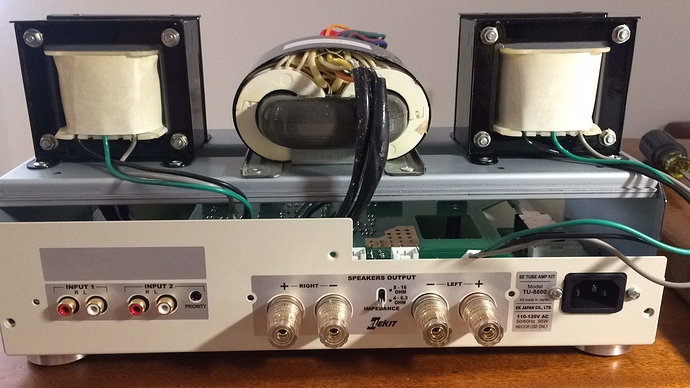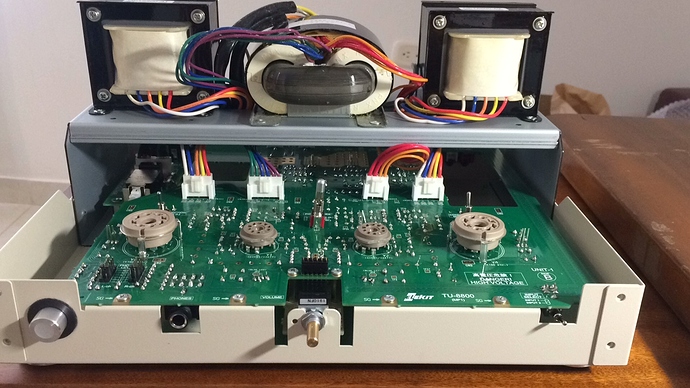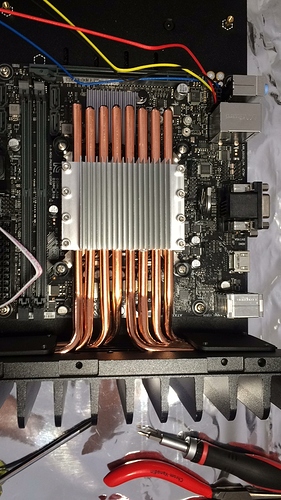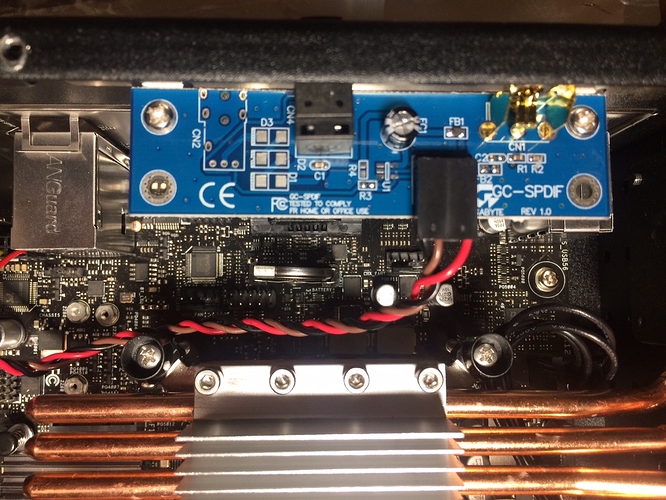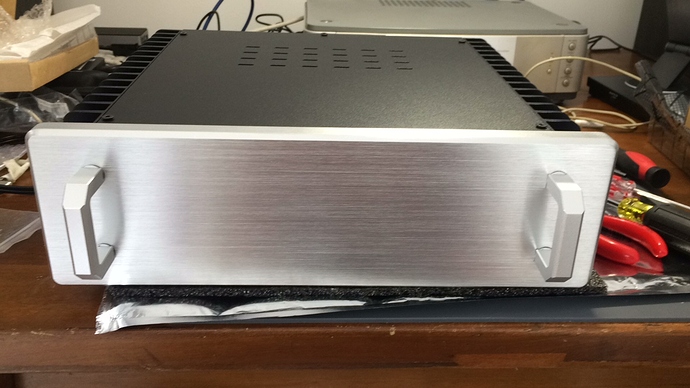Your build looks great. Are those B&W speakers in the background? I’ve always wanted a pair but that bass would overpower my room. I also like that you put the drives in the chassis. Do you find them quiet enough to have in the listening room?
I built a music server using the same chassis. I used a ThinITX board, Celeron 2.8 ghz dual core, 1 TB SSD drive, Matrix Audio USB pcie card, and an external 6TB USB drive that housed my audio collection on my prior setup on a Macbook Air. Power supply is an old Dell 60W laptop supply I had laying around. I’m running headless and have the unit in my rack with my other audio gear. Also built a RasPi 4 music streamer and have a Squeezebox Touch upgraded with the digital audio mods for USB digital output and HD audio. Audio system is Chord Qutest feeding McIntosh C48 preamp to 402 amplifier and then to Dynaudio Confidence C2 speakers.
I saw the question on how this works compared to other platforms like Linux. I’ve had a lot of time on my hands so I’ve been playing around with Roon and a variety of server configurations with this platform. Roon Server with Windows 10 (ASIO and WASAPI), Roon Server on Ubuntu Linux over ALSA, Roon Server (both W10 and Linux) streaming to RasPi streamer, Roon Server to SB Touch. All configurations landing on my Chord Qutest through USB and sometimes through coax from the SB Touch. I’ve played with Roon upsampling, DSD audio, and Roon convolution filters.
Your experience my vary but mine was that there’s just not an audible difference between any of these delivery paths through my DAC when playing the same track and with same DSP processing going on. No difference between ASIO, ALSA, and WASAPI regardless of DAC connected directly to the server or connected over USB through RasPi or SB Touch. Windows 10 was the easiest by far to set up and get running reliably with every reboot. Linux was the hardest because of the USB disk drive set up. The RasPi streamer is just the cutest looking thing, was easy to get going and sounds just the same as when the DAC is connected directly to the server.
At the end of the day it was pretty inexpensive to build with this chassis and everything just worked under W10. My opinion is that folks are way overthinking computer platform aspects of this hobby. If you have a USB DAC then you can feed it from any of these platforms. Even a fourth generation Celeron I bought for $40 was able to do upsampling to 352 kHz and 2-channel convolution with Roon at 2.9x real time speed.
I think this build looks a lot better than the various NUCs. Will a high-end NUC or a Mac Mini sound better? How about a top end i7 music server streaming to a RasPi or other simple Roon Bridge? Not in my experience.
If I were building this again I would probably go with a standard mini ITX (thin variants seem hard to find) or go with a NUC motherboard. Definitely would use this chassis as the base though. They did a great job with the heatsink system and everything lines up great for bolting it all together.
